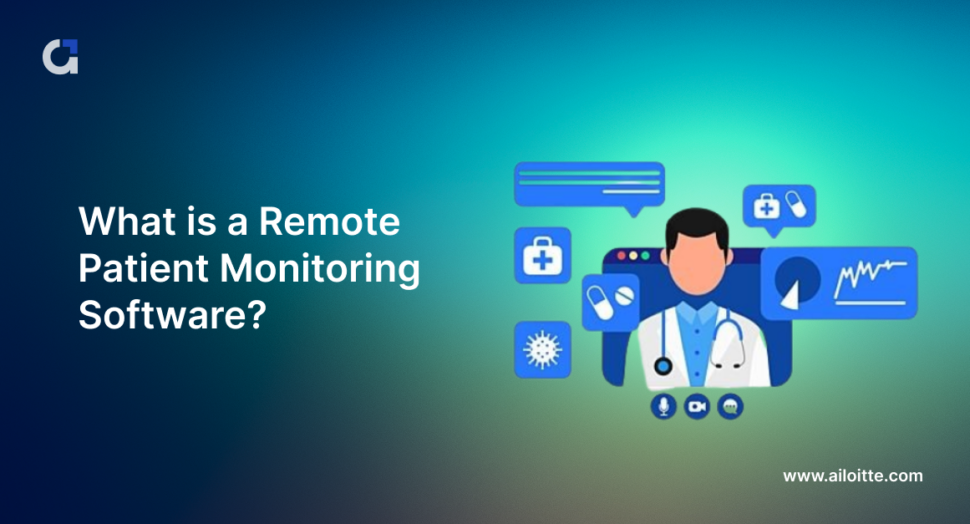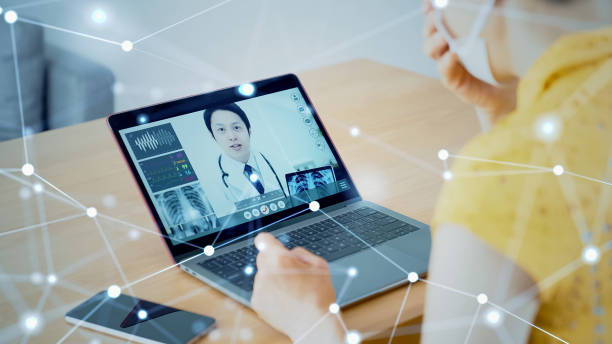Cutting-Edge RPM Software: Improve Patient End Results with Innovation
Cutting-Edge RPM Software: Improve Patient End Results with Innovation
Blog Article
The Future of Healthcare: Remote Individual Monitoring Simplified
As medical care continues to advance, one location that holds immense assurance is remote patient surveillance. The idea of streamlining this procedure with technological innovations is reshaping the way care is delivered and gotten. With an emphasis on boosting client results and enhancing medical care distribution, remote monitoring is poised to reinvent the market. By discovering the benefits, technological advancements, and future patterns in this area, we can get beneficial insights into the transformative potential of remote patient surveillance.
Benefits of Remote Person Monitoring
Remote client tracking provides a wide variety of benefits for both healthcare providers and people alike. In addition, remote patient monitoring boosts the general top quality of treatment by giving a more alternative and detailed sight of clients' wellness condition beyond traditional in-person visits.
In addition, remote individual tracking can lead to enhanced person end results and fulfillment. Remote surveillance can lower the requirement for regular medical facility visits, reducing healthcare expenses for both patients and suppliers.
Innovation Driving Remote Surveillance
In the realm of contemporary medical care, technical developments play a pivotal role in driving the development and efficiency of remote patient tracking. The integration of ingenious technologies such as wearable gadgets, mobile applications, and cloud-based platforms has transformed the method medical care companies from another location monitor and handle individual health - rpm software. These innovations enable continual real-time monitoring of important indicators, medication adherence, and various other important health and wellness information, enabling timely interventions and individualized care plans
One trick innovation driving remote monitoring is the Web of Things (IoT), which allows smooth connection between medical tools and health care systems. IoT devices such as smartwatches and cordless sensors accumulate and send client data to centralized systems, promoting remote tracking from throughout the globe. Artificial intelligence (AI) and artificial intelligence algorithms even more enhance remote monitoring by evaluating vast quantities of individual information to spot patterns, forecast wellness fads, and alert doctor to potential concerns.
Effect On Healthcare Distribution
With the integration of sophisticated modern technologies driving remote patient monitoring, the effect on medical care delivery is becoming transformative and significantly extensive. Remote client tracking allows healthcare suppliers to use more positive and tailored like patients, causing boosted health and wellness end results and lowered health center admissions. By from another location tracking important signs, symptoms, and medicine adherence, medical care specialists can intervene early, preventing issues and improving the general top quality of treatment.
Additionally, remote tracking enhances accessibility to medical care services, especially for individuals in underserved or country locations. Clients can obtain continual surveillance and assistance from their homes, removing the need for frequent in-person brows through. This not only conserves time and minimizes prices for both clients and healthcare centers but likewise lessens the danger of direct exposure to contagious illness, a vital factor to consider in the existing health care landscape.
In addition, remote client monitoring makes it possible for health care suppliers to much better allocate resources and focus on visit their website treatment based on real-time data. By determining risky clients and intervening promptly, health care delivery becomes a lot more efficient and reliable, ultimately bring about a much more sustainable and patient-centered healthcare system.
Improving Client Outcomes

In addition, RPM permits positive monitoring of persistent problems, lowering the possibility of acute exacerbations and healthcare facility readmissions. Individuals gain from increased benefit and comfort, as they can obtain treatment in their own homes while staying connected to their health care providers. This continuous tracking not only improves individual complete satisfaction but likewise promotes a feeling of empowerment and involvement in their own health and wellness administration.
Future Trends in Remote Monitoring
Embracing sophisticated innovations in remote patient monitoring is forming the future landscape of healthcare delivery. The future patterns in remote tracking are anticipated to change the method healthcare is given, making it much more efficient and patient-centric. One substantial fad is the boosted usage of wearable devices and sensors to collect real-time data, making it possible for medical care carriers to monitor people constantly without the need for frequent in-person sees. These gadgets can track essential indicators, medication adherence, and task levels, giving an extensive view of the person's wellness standing.

Furthermore, telehealth platforms view publisher site are ending up being a lot more innovative, enabling digital appointments, remote diagnosis, and remote patient monitoring done in one integrated system (remote patient monitoring platform). This all natural method to remote surveillance is improving medical care shipment, boosting patient complete satisfaction, and eventually, enhancing overall high quality of care
Verdict
In final thought, remote person surveillance offers countless benefits in health care shipment, driven by advancements in modern technology. It has the possible to enhance individual outcomes and revolutionize the way medical care is delivered. Future patterns in remote surveillance will certainly continue to form the landscape of healthcare, supplying chances for even more personalized and efficient client care.
Remote individual monitoring provides a wide range of advantages for both health care companies and individuals alike. Additionally, remote client surveillance enhances the overall top quality of care by providing a much more comprehensive and alternative view of clients' health and wellness standing beyond standard in-person gos to.
In addition, remote individual surveillance can lead to better patient results and fulfillment. Remote individual tracking allows healthcare carriers to provide even more personalized and aggressive treatment to patients, leading to enhanced health end results and minimized medical facility admissions. Remote news person surveillance (RPM) plays a significant function in boosting individual outcomes by giving continuous, real-time data that allows healthcare service providers to step in without delay and change treatment strategies as required.
Report this page